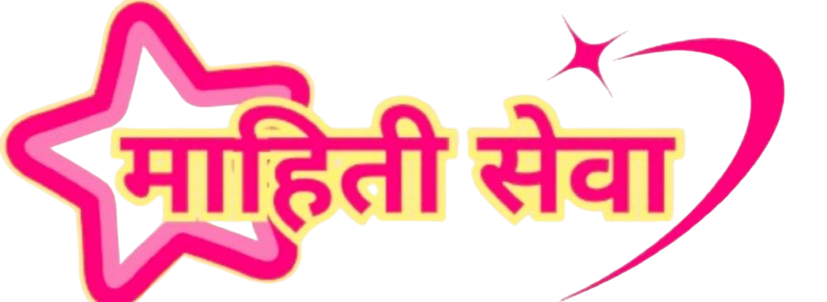पंढरीच्या वारीवर यापुर्वी पण संकटे आली होती.
२०२० मध्ये कोरोनाच्या महामारीमुळे पंढरीची वारी निघाली नाही. वारीचा इतिहास पाहता या अगोदरही वारी वर अनेक संकटे आली होती.
मोठी परंपरा असलेल्या वारीने आतापर्यंत अनेक सुलतानी, आस्मानी संकटे झेलली आहेत.
तुकोबांचे थोरले सुपुत्र हभप नारायण महाराज यांनी सुमारे 1680 पासून श्री संत तुकाराम महाराज आणि श्री संत ज्ञानेश्वर महाराज यांच्या पादुका पालखीत ठेवून आणि 'ज्ञानोबा-तुकाराम' भजन करत पंढरीची सामूहिक पायी वारी सुरू केली.
1830च्या दरम्यान म्हणजे तुकोबारायांच्या वंशजांमध्ये पालखीच्या मालकी आणि सेवेच्या प्रश्नावरून तंटा सुरू झाला. त्यामुळे मराठेशाहीतील शिंदे घराण्याचे सरदार हैबतरावबाबा आरफळकर यांनी स्वतंत्रपणे 1832च्या पुढे श्री ज्ञानदेवांची पालखी पंढरपूरला नेण्यास सुरुवात केली.
वारकऱ्यांच्या या मेळ्याला वाटेत दरोडेखोरांनी वगैरे त्रास देऊ नये आणि त्यांना काही सुविधा मिळाव्यात म्हणून अंकली येथील एक सरदार शितोळे यांनी संत ज्ञानदेवांच्या पालखी सोहळ्याला हत्ती, घोडे, जरी पटक्याचे निशाण आदी गोष्टी दिल्या. हत्ती वगळता या गोष्टी आजही दिल्या जातात.
त्यानंतरच्या काळात महाराष्ट्रातील इतरही ठिकाणांहून अन्य संतांच्या पालख्या पंढरीच्या आषाढी वारीला येण्यास सुरुवात झाली.
इतिहास अभ्यासक संजय सोनवणी सांगतात, "जेव्हा जेव्हा दुष्काळ पडले, तेव्हा तेव्हा वारीवर परिणाम झाला आहे. वारकरी हे मुख्यतः शेतकरी, पशुपालक असल्याने त्यांना दुष्काळामुळे वारीला जाता आलेले नाही. उदा. संत तुकाराम महाराजांच्याच काळात 1630मध्ये दुर्गाडीचा प्रसिद्ध दुष्काळ पडला होता. इ.स. 1296 ते 1307 या काळातही मोठा दुष्काळ वारकरी पंढरीला जाऊ शकले नसावेत."
ब्रिटिशकाळातही या सामूहिक वारीमध्ये बाधा आली होती. "1942-45च्या दरम्यान पहिले महायुद्ध आणि 'चले जाव' चळवळ यामुळे ब्रिटिशांनीच सामूहिक वारीवर बंदी घातली होती. त्याच प्रमाणे प्लेगच्या साथीचाही मोठा तडाखा विशेषतः पुण्यातून जाणाऱ्या संत ज्ञानदेव, संत तुकाराम महाराजांच्या पालखी सोहळ्याला बसला होता.
अर्थात विदर्भ, मराठवाड्यात त्यावेळी प्लेगचा प्रादुर्भाव फारसा नसल्याने त्या भागातील वारकरी पंढरपूरला वारीसाठी आले होते.",1912मध्ये प्लेगच्या काळात संसर्गापासून वाचण्यासाठी जिल्हाधिकाऱ्यांनी पालखी सोहळ्यावर बंदी घातली होती. 1945 मध्ये दुसऱ्या महायुद्धाच्या काळात ब्रिटिशांनी पालखी सोहळ्यावर बंदी घातली होती. त्या साली तानुबाई देशमुख, सदाशिव जाधव आणि रामभाऊ निकम यांनी अनुक्रमे 13 जून 1945 आणि 25 जून 1945 रोजी श्री संत ज्ञानेश्वर महाराजांच्या पालखी सोहळ्यासोबत दिंडी नेण्याची परवानगी मागितली होती. परंतु मुंबई सरकारने पालखी सोहळ्यावर बंदी घातल्याचे नमूद करून त्यांना परवानगी नाकारण्यात आली होती."1920 ते 1942 या दरम्यान आपल्याकडे प्लेगची साथ होती. यामुळे 1942 मध्ये पालखी सोहळा पंढरपूरला गेलाच नाही. वारी प्रातिनिधिकरीत्या तरी व्हावी म्हणून देहूतून पाच लोक संत तुकाराम महाराजांच्या पादुका घेऊन सायकलवर पंढरपूर वारीला गेले. त्यामध्ये बाबासाहेब इनामदार, गोविंद हरी मोरे, बबन कुंभार आदींचा समावेश होता. पंढरपूरला पोहोचण्यास त्यांना तीन दिवस लागले. तुकोबारायांच्या पादुकांना चंद्रभागा स्नान, एकादशीला पांडुरंगाचे दर्शन घडवून, द्वादशी सोडून ही मंडळी परतली."पायी वारी केल्याने 'काया, वाचा, मने' देवाची भक्ती होते, अशी वारकऱ्यांची श्रद्धा आहे. पंढरपूर किंवा अन्य संतांच्या गावाला वाऱ्या अर्थात येरझाऱ्या करणे हा महत्त्वाचा भाग या भक्ती पंथात सांगितला गेला आहे.
वारी करणे ही जशी शारीरिक साधना आहे, तशी ती मानसिकही साधना आहे.
महाराष्ट्रात पिढ्यान् पिढ्या पंढरीची वारी करणारी घराणी आहेत. संत तुकाराम महाराज म्हणतात,
माझ्या वडिलांची मिराशी गा देवा।
तुझी चरणसेवा पांडुरंगा।।
Earlier, there were calamities on Pandhari Wari.
___________________________
mahiti seva Group Pethwadgaon
___________________________
Pandora's turn did not come this year due to the Corona epidemic. Looking at the history of Wari, there were many calamities on Wari even before this.
Wari, with its long tradition, has so far endured many sultanic, heavenly calamities.
Habak Narayan Maharaj, the eldest son of Tukoba, started the Pandhari mass procession from about 1680 by placing the shoes of Shri Sant Tukaram Maharaj and Shri Sant Dnyaneshwar Maharaj in a palanquin and chanting 'Znanoba-Tukaram'.
It was during the 1830s that a dispute arose among the descendants of Tukobaraya over the question of palanquin ownership and service. Therefore, Haibtrao Baba Arfalkar, the chief of the Shinde dynasty in the Maratha Empire, started carrying the palanquin of Shri Dnyandev to Pandharpur independently after 1832.
Shitole, a Sardar from Ankali, gave elephants, horses, and even a flag to the Palkhi ceremony of Saint Dnyandev so that the robbers would not be disturbed on the way to the fair. These things are still given today except for elephants.
Later, palanquins of other saints from other parts of Maharashtra started coming to Ashadhi Wari of Pandhari.
Historian Sanjay Sonwani says, "Whenever there is a drought, it affects the Wari. As the Warakari are mainly farmers and pastoralists, they have not been able to go to the Wari due to the drought. Even during the period 1296 to 1307, a great famine could not have reached Warakari Pandhari. "
Even during the British rule, this collective war was hampered. During 1942-45, due to the First World War and the 'Leave' movement, the British imposed a ban on mass warfare.
Of course, since the plague was not so prevalent in Vidarbha and Marathwada at that time, the Warakaris of that area had come to Pandharpur for Wari. " And Rambhau Nikam had sought permission to take Dindi with the palanquin ceremony of Shri Sant Dnyaneshwar Maharaj on 13 June 1945 and 25 June 1945 respectively, but was denied permission by the Mumbai government stating that the palanquin ceremony was banned. "Between 1920 and 1942, we had the plague . Due to this, the palanquin ceremony did not go to Pandharpur in 1942. so that Wari could be represented at least. Among them were Babasaheb Inamdar, Govind Hari More, Baban Kumbhar and others. It took them three days to reach Pandharpur. The congregation returned after leaving Chandrabhaga bath at Tukobaraya's feet, visiting Panduranga on Ekadashi, and leaving Dwadashi. " Has been stated in the cult.
Just as doing Wari is a physical sadhana, it is also a mental sadhana.
In Maharashtra, there are families who have been doing Pandhari Wari for generations. Saint Tukaram Maharaj says,
Sing to my father's inheritance.
Your foot service Panduranga.
Tags
धार्मिक

